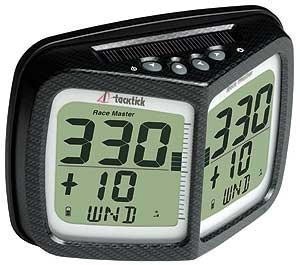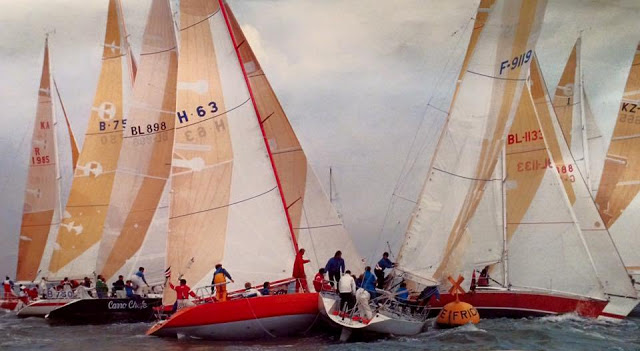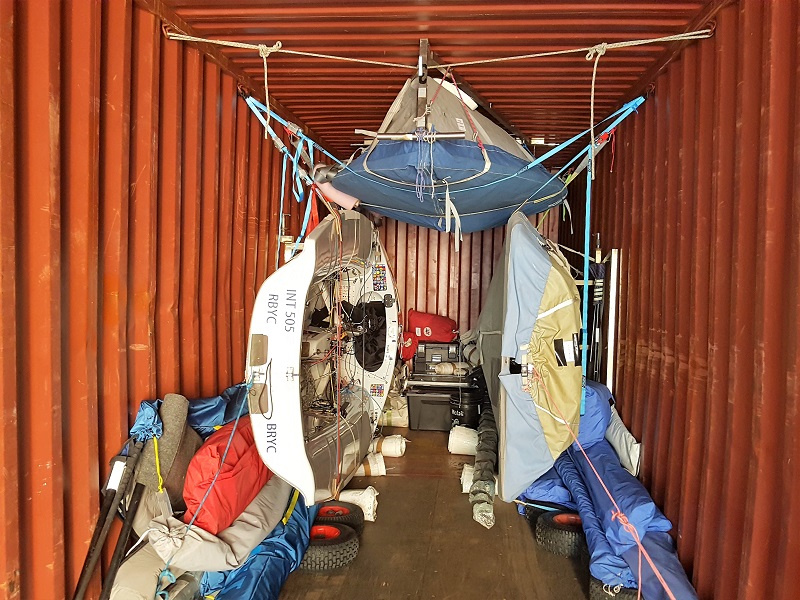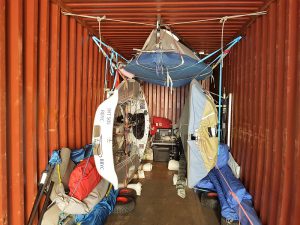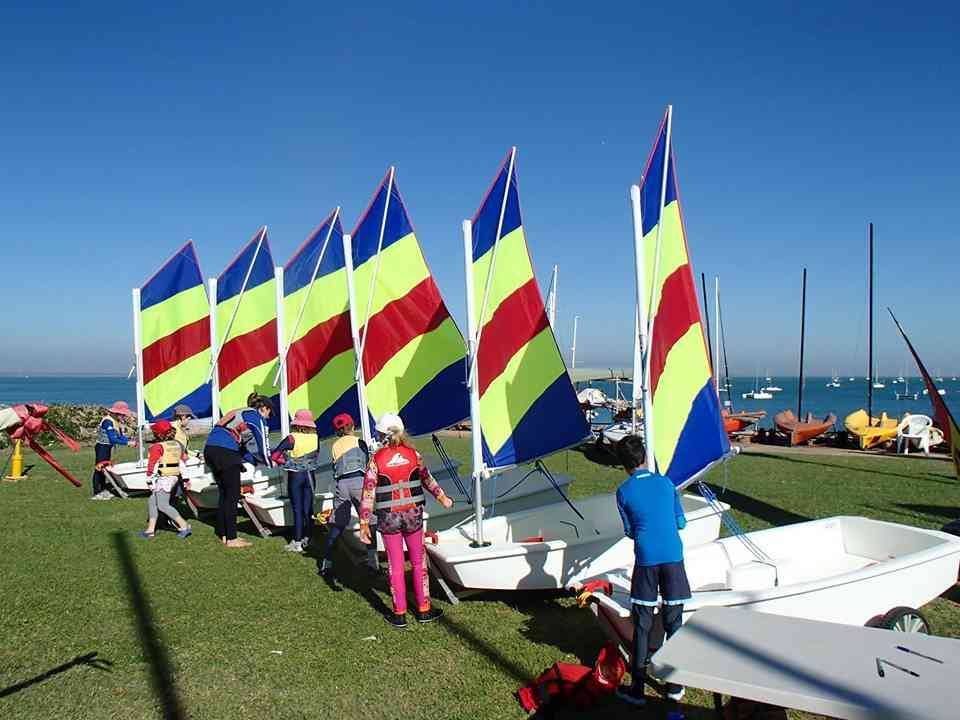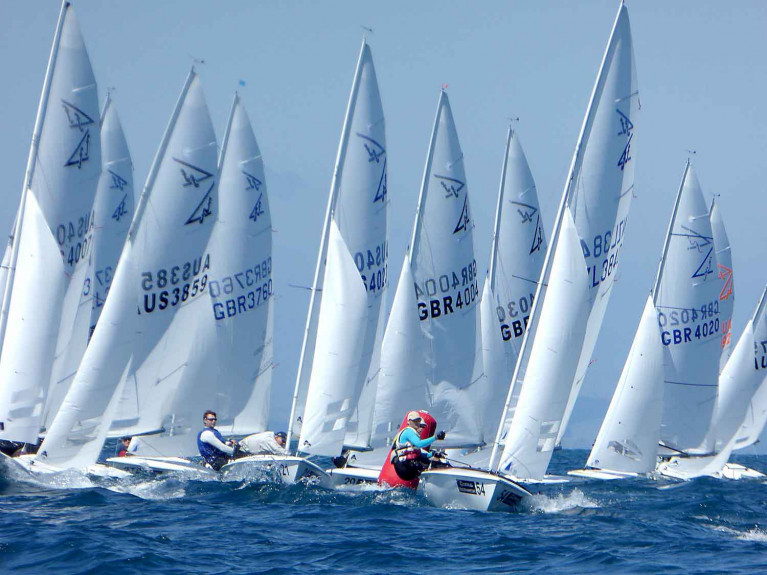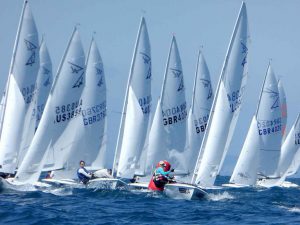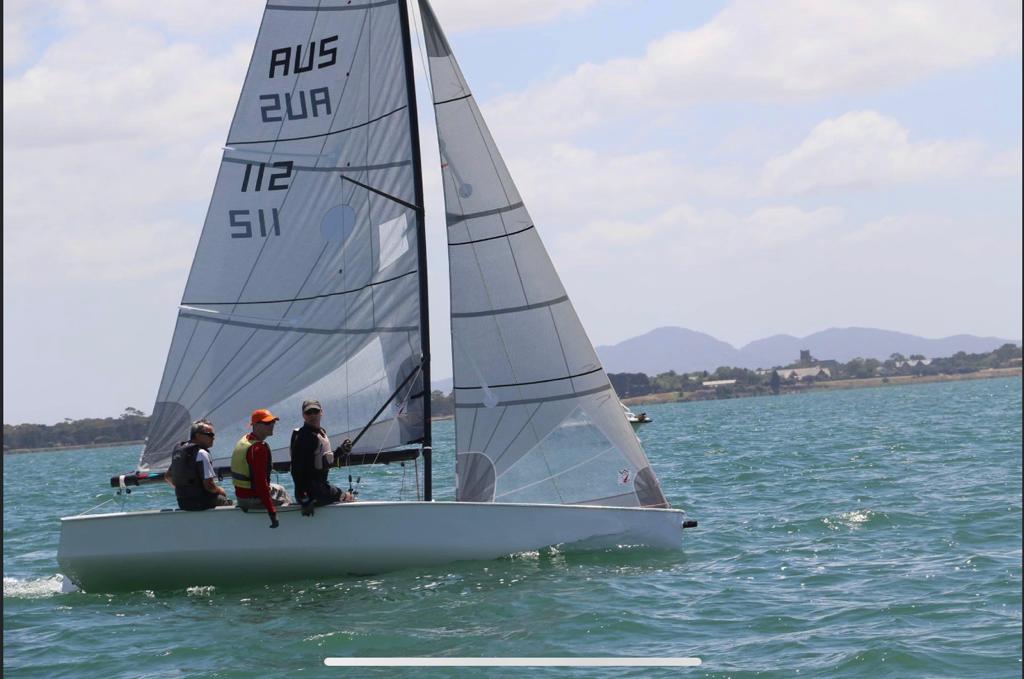
Trimming Sails Together. Generally, on boats that are going slow, one sail will be much looser or tighter than the other. Conversely, it might be flatter or fuller than the other.
Fast boats have similar depth in the main and jib as well as similar twist profiles. It is worth noting though that even if conditions don’t dictate flat sails, flat sails trimmed well and together will still be faster than mismatched sails. Matching sails keeps the slot a similar distance apart from top to bottom.
Match Your Sails Trim
The best way to match your sails is to talk in terms of power, and the main trimmer or the helmsman usually makes that call.
The main trimmer should communicate power to the jib trimmer. Say, “Perfect power”, which lets the jib trimmer know we are trimmed to the sweet spot. If a lull comes and you have to trim harder to get more power, communicate that. If the wind lightens off call “searching for power”. This alerts trimmers it’s time to adjust controls like outhaul and jib cars creating more depth and power.
Other controls that have an effect on power are the vang and Cunningham. As the wind lightens off both will need to be eased. The reverse is true as the breeze increases. The controls that were eased when you were powering up need to tighten to depower. As always the controls for each sail need to be adjusted in unison.
Helm Load
Helm load information is another way to talk about coordinating sail trim. If the boat is heeling too much and the helmsman is feeling too much helm, they should mention it to the main trimmer so they can depower the main, which reduces heel angle and reduces helm.
If the main trimmer needs help from the jib trimmer, for example, if the backstay is already tight and the traveller is down, that information gets passed forward.
Communicating what’s happening with the backstay and traveller queues the jib trimmer adjusts the jib to match the new mainsail twist profile.
Small changes to the backstay and traveller need not be communicated. Big changes warrant adjustments of both the main and jib sheets.
It doesn’t make any difference which person makes the call as long as the sails are adjusted together, you’ll be faster.




